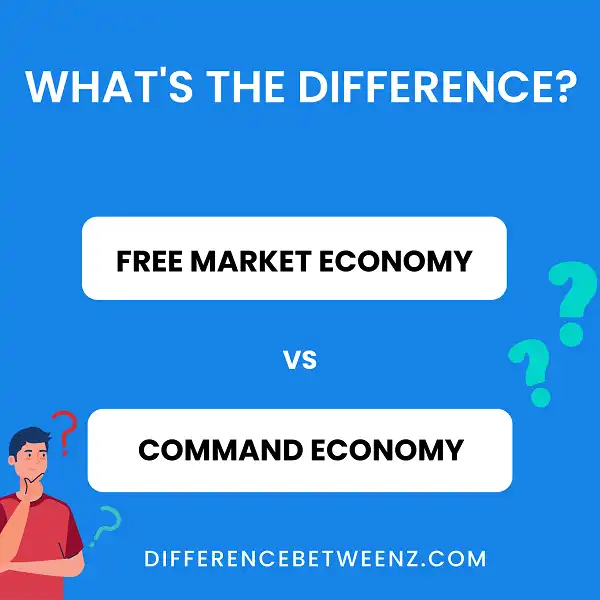When it comes to understanding the differences that exist between a free market economy and a command economy, there are many factors involved. To begin to identify and comprehend how these two models of economic growth operate differently from one another, it is important to understand their shared history and fundamental goals in addition to outlining what makes them separate concepts. By delving into their tax policies, production forcings, government regulations, and consumer demand capabilities, readers can gain clarity on the significant distinctions that exist in a free market economy versus a command-filled atmosphere.
What is a Free Market Economy?
A Free Market Economy is an economic system where market forces such as supply and demand determine the prices of goods and services. Unlike other systems, Free Market Economies operate without any government involvement or control.
- These economies are sometimes also referred to as “laissez faire” economy, meaning that a Free Market Economy is based on the notion of allowing businesses to compete with minimal government intervention or restrictions.
- This system encourages competition among businesses by allowing them to set prices, produce whatever they want, and hire whoever they need, while consumers can purchase what they desire.
- Free Market Economies attempt to maximize benefits for both producers and consumers by providing incentives for efficient production, in turn reflecting positively on the overall economic environment.
What is Command Economy?
- Command Economy is an economic system in which all important decisions regarding the production and distribution of goods and services are made centrally by the government. This type of economy is commonly found in countries with strong socialist ideologies, such as Cuba and North Korea.
- Command Economies can potentially bring many benefits as they are capable of quickly mobilizing resources to enhance public services while establishing price controls to ensure that basic necessities are made affordable for all citizens.
- However, Command Economies suffer from several drawbacks, such as a lack of consumer choice, reduced economic growth, and a smaller amount of innovation due to a lack of competition among businesses. Ultimately Command Economies can provide some benefits but their long-term sustainability has yet to be proven.
Difference between Free Market Economy and Command Economy
A Free Market Economy is based on the notion of allowing market forces, such as supply and demand, to set prices without interference from the government, whereas Command Economy is where the state intervenes with decision-making by implementing laws, regulations, or subsidies. A Free Market Economy has made it possible for businesses to operate with fewer restrictions, while Command Economy stunts businesses by issuing top-down decisions.
A Free Market Economy allows people to specialize in their strengths and get rewarded accordingly with wages and profits, leading to an increase in productivity, while Command Economy stagnates both innovation and production due to its heavy reliance on state control. Ultimately, Free Market Economics encourages competition and growth while Command Economy stifles it.
Conclusion
As you can see, there are major differences between a free market economy and a command economy. In a free market economy, the government does not interfere with economic decisions made by individuals or businesses. The government also doesn’t own most of the factors of production. This type of economy is more efficient since businesses can make decisions based on what consumers want. Command economies are less efficient because the government makes all the economic decisions. The government also owns most of the resources in this type of system.


